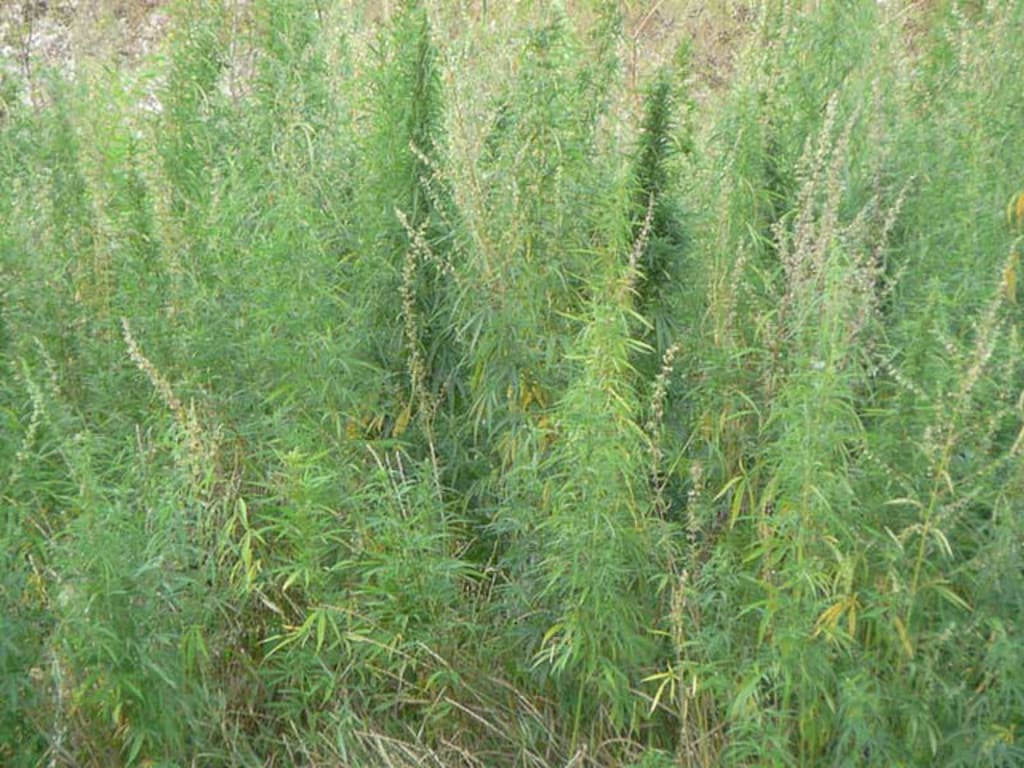Cannabis Ruderalis
The hardier strain that grows quicker.

Sativa gets you up and going, indica keeps you chill. But who has heard of the third sibling of the marijuana plant? While the cannabis plant has been selected for myriad properties for tens of thousands of years, ruderalis was not identified until 1942 by a Soviet botanist, known to the internet only as Janischewski. The natural scientist was studying cannabis plants along the Volga river valley when he noticed he had found a unique strain of the wild-growing plant.
Like the other strains of the cannabis plant, ruderalis developed in the Asian steppe and Siberia. Rarely rising higher than two feet, it has adapted to more northerly climes. The strain, unlike indica and sativa, does not possess a high amount of psychoactive THC in its flower. And yet, growers around the world have begun to cross-breed the ruderalis with its more potent siblings. Why?
The answer lies in its native environment. In the harsher climes of Siberia, the growing season for plants is short and sporadic, often lasting less than three months out of the year. As a result, the ruderalis has learned to make hay when the sun is shining. Unlike sativa and indica strains, the ruderalis does not wait until it senses the waning light of the autumn season to flower; it does so automatically. When cross-bred with an indica or sativa sister, the resulting plant reaches full maturation in less than ten-weeks, whereas non-ruderalis strains may take up three times as long before they can produce flowers ripe with THC and CBN.
Cannabis ruderalis derives its name from the latin rudera. When relating to plants, the word denotes a species that moves in and grows after an ecosystem has been damaged or upset. For centuries of marijuana cultivation, growers considered ruderalis a kind of wild, sparsely growing hemp.
Cannabis ruderalis occupies a liminal space in the plant’s family. As Bibek Debroy illuminates in an article for The Indian Express, it complicates issues of banning the drug. Neither fully psychoactive nor totally narcotic-free, it proved a touchy subject as early as 1894 when an Bengalese marijuana commission struggled to classify it.
While marijuana strains cross-bred with ruderalis parents will win no contests for THC levels, it will increase plant production by as much as three-fold. Whether you have been growing for years or just starting up, it might be worth it to consider an autoflowering ruderalis strain to speed up production. Popular strains such as Tutti Frutti and Aurora Borealis, for example, share a ruderalis lineage. Certain growers also choose ruderalis for its cannabidiol (CBN) levels, which are far higher than the average indica or sativa plant. CBN-high plants have been used with increasing frequency for their medicinal effects, including relief from seizures and anxiety. Many smokers also prefer a mid-THC, high CBN mix for smoking: “Think of it as having a beer instead of a shot of tequila,” writes Percy Grower on The Marijuana Times.
Grower shared some more wisdom about ruderalis strains: “Once the seed germinates, a tap root is sent down to figure out how much space the plant has to grow in. Once this tap root hits an obstacle it sends a message to the rest of the plant to stop growing and start flowering.” When choosing a pot, therefore, it is best to use one of medium depth. More root means more fruit. But allowing the root to grow quite deep delays flowering, defeating the purpose of using a ruderalis strain in the first place.
The ancestors of this third strain of weed have endured thousands of harsh Siberian winters. We should honor these plants, and use them to grow ... more, and a lot quicker.
About the Creator
Henry Kronk
Copyeditor and freelance journalist. Born a Sagittarius, making him “fun-loving, spirited, and energetic,” according to Astrolabe.com.






Comments
There are no comments for this story
Be the first to respond and start the conversation.